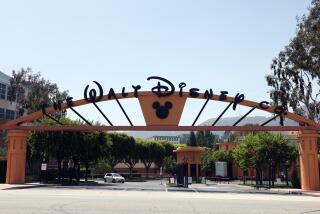GM’s Future Is Riding on CEO-to-Be
- Share via
General Motors Corp., the world’s largest--and some say most sluggish--auto company, is betting its future on Chief Executive-designate G. Richard Wagoner Jr.’s expertise in production efficiency and his willingness to let the company’s auto designers spread their wings and erase GM’s image as a me-too car maker.
Wagoner, named Wednesday to succeed John F. Smith Jr., faces formidable challenges, and chief among them will be to regain some of the market share the company has lost in the last three decades.
Industry watchers believe that the 22-year veteran of GM’s often tumultuous management wars has a good chance of succeeding.
“He’s a great leader who knows what he doesn’t know and is willing to defer,” said David Cole, director of the University of Michigan’s Office for the Study of Automotive Transportation. “We’ll see a lot of evidence of that in the next few years.”
Cole said Wagoner, who turns 47 next week, has told him to expect to see “a cadre of younger guys moving into prime positions at GM, people with design, technical and manufacturing skills.”
Wagoner “understands that product is king and that while GM has competent product, it doesn’t have enough shining product,” said Brad Fox, an analyst at AutoPacific Inc. in Detroit.
When he becomes chief executive in June, Wagoner will take charge of GM’s global strategies and operations. But he says he will focus on the auto side of the business.
Competition in the industry “is getting tougher, and to win we’ve got to lead in terms of innovative products,” he said Wednesday.
GM’s cars have failed to grab the buying public’s attention, and though its trucks sell well, the company failed to predict the market shift to pickups and sport-utility vehicles in the last decade and is only now increasing production of those vehicles.
At their peak in 1962, GM’s brands accounted for 51% of the new cars and trucks sold in the United States. Last year, GM’s market share was 29.7%--a tenth of a point lower than in 1998, when sales were hurt by two strikes that crippled production. Globally, GM has lost more than half its market share since its postwar peak of almost 40% in 1950.
As a result, GM’s stock has languished in relation to earnings--the company announced Tuesday a reallocation of $15 billion in stock it owns in Hughes Electronics, in part to unlock the subsidiary’s value for shareholders.
GM shares fell 4.6% on Wednesday, losing $3.88 to close at $81.38 in heavy New York Stock Exchange trading. But securities analysts said the drop came as a result of profit taking after a recent mild run-up in the stock’s price and was unrelated to the succession announcement.
“The management changes were very much expected. . . . I don’t think we’ll see anything earth-shattering” come from the move, Lehman Bros. analyst Nicholas Lobaccaro said.
Smith, 61, will remain chairman and squelched speculation Wednesday that he will retire in May when his mentor, John Smale, is scheduled to leave GM’s board. Smith said that he intends to hold the chairman’s post indefinitely and that he will spend most of the next year traveling as he concentrates on GM’s overseas operations.
Harry Pearce, the 57-year-old attorney who joined GM’s legal department in 1985 and was general counsel for seven years, continues as vice chairman, a post he has held since 1996. He is expected to slip into the chairman’s seat when Smith does retire.
Wagoner downplayed the importance of his elevation, maintaining that he has been part of top management for eight years: “It would be incomprehensible for me to come in now and throw that all out. But we have set things up so we can move faster now. There will be no huge changes in strategies, but that doesn’t mean there won’t be some changes in the company.”
He cited as examples of change the decision last year to spin off its parts group to form Delphi Automotive Systems, as well as GM’s leap into electronic commerce, providing product information online to consumers and conducting its buying and selling of parts and equipment on the Internet.
“The opportunity to participate in the growth of the Asia-Pacific market is also one we cannot miss,” Wagoner said, promising to continue the company’s growth there through “leverage and partnerships, an interesting business approach that is fairly new to us.”
(BEGIN TEXT OF INFOBOX / INFOGRAPHIC)
A Tough Job
Some challenges G. Richard Wagoner Jr., GM’s next chief executive, will face:
* Cut costs: GM now spends about $700 more than Ford to produce each vehicle. Under Wagoner and his predecessors, improvements have been made in GM’s domestic manufacturing, but there’s a lot more to be done.
* Improve market share: From a high of 51% of all U.S. passenger vehicle sales in 1962, GM’s domestic market share has plunged to 29.7%. Wagoner says he is committed to restoring GM’s luster.
* Increase Asia-Pacific presence: Wagoner says GM is trailing competitors such as Ford and Toyota in mining the market in what will be the fastest-growing economy in the world for the next few decades.
* Jump-start GM’s sluggish corporate culture: “The winner is going to be the company that is big and fast,” Wagoner says, “and ‘fast’ has not been associated with GM in the past.” He has promised to infuse management with new, younger blood.






